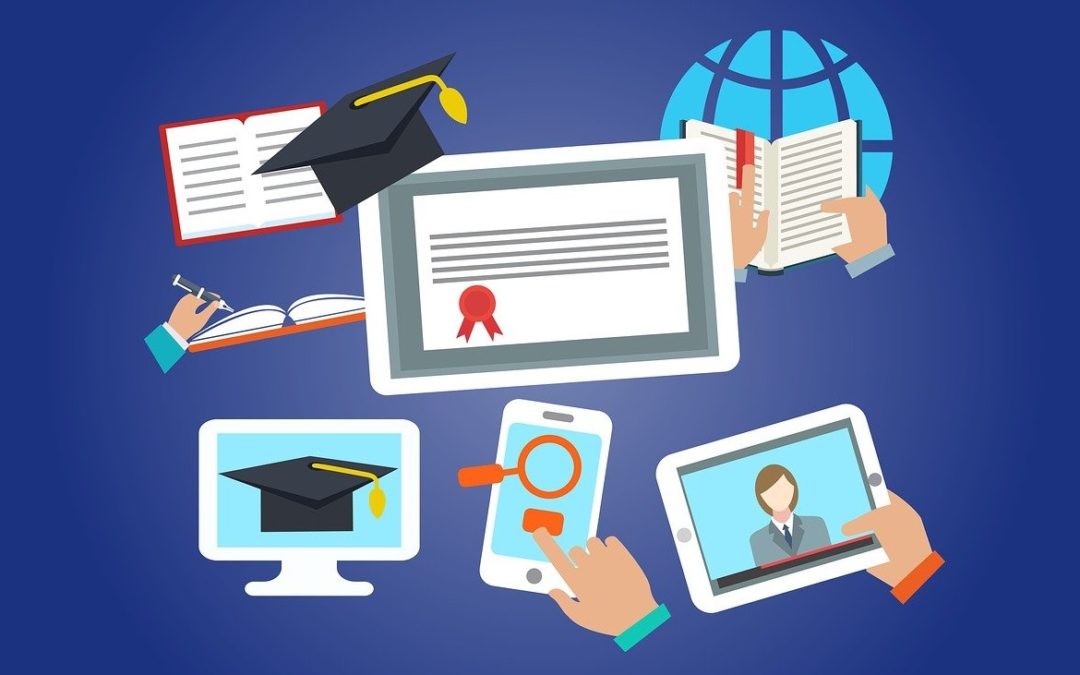Many education centers around the world transitioned to an online or hybrid model in the face of COVID-19. This impacted the majority of their learners, and not always in a positive manner. These learners had little time to learn to adjust to their new way of learning. What’s more, some were unable to continue their education altogether, for a variety of reasons.
While online education saw tremendous growth, it’s worth taking a hindsight view at how this growth affected its target markets. The knowledge such a perspective provides may well prove critical for both the education sector and future learners. Furthermore, we need to ensure that the associated technologies are robust, safe and available to all.
Differences in digital learning models
There are crucial differences in the various forms of online education. These differences translate to varied requirements, which we should also consider as factors.
The key difference is between online learning / e-learning and distance learning, as detailed by the Skills Academy. E-learning typically consists of live online classes, with a certain amount of interaction between students and teachers. These classes usually have many students, and so are akin to a digital classroom setting, taking place at set times.
Distance learning, on the other hand, simply creates a digital interface between a learner and the course materials, tools and examinations. This usually means that anyone, in an individual capacity, can sign up for a distance learning subject and perform the study requirements on their own schedule.
What online education requires
For starters, content. Both online and distance learning require digital material, especially the latter. Course content and evaluation processes should be in a format which is readily accessible by learners and educators alike. Furthermore, course curators must be able to change the content easily and efficiently keeping it up to date to meet all education standards.
Learners also need to ensure they meet the technology requirements associated with their chosen learning model. For example, online classes with mass participation via video streaming often need far better hardware and connectivity than is sometimes available via mobile phone and mobile data. Many learners in developing nations don’t have access to such resources. It behooves education sector regulators to ensure that, in light of the increase in digital learning, resource management is planned accordingly, to ensure that prospective learners are able to study the way they choose to.
From the learners’ perspective, they need to approach with a certain degree of discipline. Digital learners take it upon themselves to ensure they attend online classes, or complete and submit assignments on time. In this, digital learning is very much similar to the traditional physical model. If one does not complete the work correctly and given in on time, you don’t receive the marks for it.
It takes some getting used to
Not everyone is happy or comfortable with learning in such a manner, however. Social media platforms are awash with learner complaints about the isolation, and other problems, they experience with online education. Meanwhile, many institutions, from higher learning centers to app development groups, wrestle with the problems and propose solutions. Finally, there is still a rush to convert many materials, especially for primary or secondary schooling, to digital format.
Where possible and feasible, educators continuously remind learners that the COVID-19 situation and its problems are not permanent. While this is of small relief to those who are missing out on quality education in the meantime, the reassurance is helping some learners tough it out.
What online education cannot replace
There are certain aspects of education that do not translate well to a digital process.
One very prominent example is vocational training, or technical skills development. It is exceedingly challenging to fully replace hands-on learning of a physical craft with theory and video demonstration. To illustrate this, think of a simple situation such as learning how to build a stool. While you may glean the process, tips and tricks from watching someone else do it, whether by live demonstration or some digital resource, there is no substitute for shaping the materials and putting it together yourself.
This is a fairly large limitation when you think of all the practical tasks out there. Job skills that require physical hands on deck simply cannot be learnt passively, certainly not to a degree where the learner can reliably be considered proficient.
Another example has to do with personal learning styles, such as those demonstrated by the VARK model (Visual, Auditory, Reading/Writing and Kinesthetic). These learning styles suggest that each learner benefits the most from educational material disseminated in a particular way. For kinesthetic-affinity learners, online education may well present a problem, in that it cannot engage their preferred style of learning as well as it can for other learning styles.
Finally, the digital learning space tends to deal poorly with interpersonal abilities and soft skills development. This is fairly understandable, given the limitations in human interactions with both e-learning and distance learning. What’s more, even if you make the effort to obtain such skills via digital means, you don’t have much opportunity to apply them in any kind of remote access environment.
In summary, online education has served learning communities well during the COVID-19 pandemic, and may well continue to do so far into the future. However, we need to ensure that we remove technological limitations as an entry barrier wherever they exist. Furthermore, we should not seek to replace in-person education with digital-only models, as this would have an excluding and detrimental effect on a significant number of learners.

